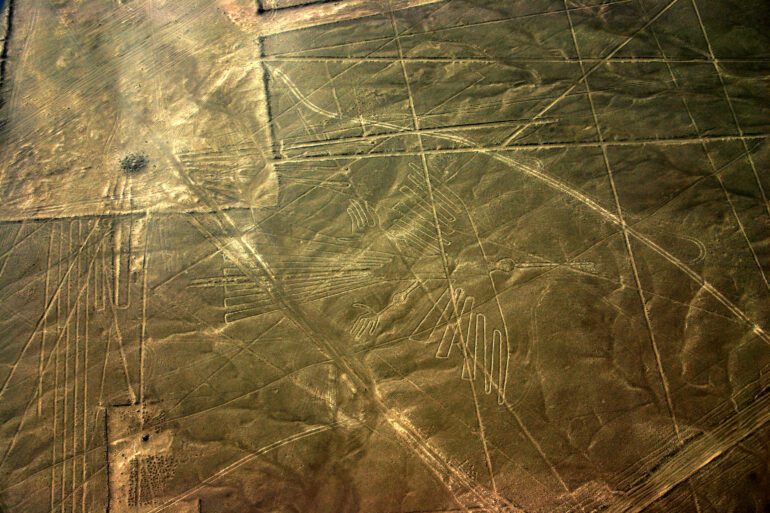TL;DR:
- Japanese scientists employ AI deep learning to discover four new geoglyphs in Peru’s Nazca Pampa.
- Research led by Professor Makato Sakai from Yamagata University since 2004.
- Geoglyph distribution surveys were conducted using satellite imagery, aerial photography, LiDAR, and drone photography.
- Nazca Lines, created by the ancient Nazca people around 100 BC, is well-preserved.
- Collaboration with IBM Japan researchers and machine learning techniques reveal previously overlooked designs.
- Geoglyphs are categorized as figurative, geometric, and lineal types.
- AI deep learning accelerates the image analysis process.
- A study published in the Journal of Archaeological Science highlights the discovery of humanoids, fish, birds, and leg geoglyphs.
- New method enables more efficient and effective archaeological investigations.
- Machine learning offers vast potential in scientific research and analysis.
Main AI News:
In a groundbreaking development, a team of Japanese scientists has harnessed the power of AI deep learning to uncover four previously undiscovered geoglyphs in the Arid Peruvian coastal plain, situated in the northern region of Peru’s Nazca Pampa. This monumental achievement marks a significant milestone in the ongoing research efforts led by Professor Makato Sakai and his team from Yamagata University, which commenced back in 2004.
Over the years, Yamagata University has conducted comprehensive geoglyph distribution surveys, employing a range of cutting-edge technologies, including satellite imagery, aerial photography, airborne scanning LiDAR, and drone photography. These advanced techniques have facilitated an extensive investigation of the expansive Nazca Pampa region, spanning over 390 square kilometers.
The enigmatic Nazca Lines, believed to have been created by the ancient Nazca civilization around 100 BC, have captivated researchers for decades. Initially studied in detail during the 1940s, these awe-inspiring geoglyphs were officially recognized as a UNESCO World Heritage Site in 1994, with around 30 identified at the time. Remarkably, their age-defying preservation can be attributed to the region’s arid climate and the wind’s sand-clearing effect, which has shielded them from the ravages of time. However, recent floods and human activities have threatened to obscure these magnificent creations.
In a decade-long endeavor, archaeologists painstakingly identified 142 new designs within the desert landscape, relying on manual analysis of aerial photography and on-site surveying. To augment their efforts, they joined forces with researchers from IBM Japan, employing machine learning to scour the vast dataset for previously overlooked patterns.
Geoglyphs can be classified into three primary types: figurative, geometric, and lineal. The “Line-type figurative geoglyphs” entail the removal of black stones in a linear fashion to reveal the white sand beneath. On the other hand, the “Relief-type figurative geoglyphs” typically occupy sloping terrains and combine black stone and white sand surfaces.
To conduct an exhaustive survey in 2016, the research team utilized aerial photography with an impressive ground resolution of 0.1 meters per pixel. Although numerous geoglyphs were identified over time, the process was laborious and time-consuming. Consequently, the scientists turned to AI deep learning to expedite image analysis significantly.
A recent publication in the Journal of Archaeological Science showcased a groundbreaking breakthrough: the discovery of four new Nazca geoglyphs using this innovative approach. By developing a labeling technique that identifies partial pattern similarities between known and new geoglyphs, the researchers successfully unveiled these enigmatic additions.
The four newly found geoglyphs feature captivating depictions of a humanoid figure, a pair of legs, a fish, and a bird. The humanoid geoglyph portrays an individual holding a club in their right hand, measuring an impressive 5 meters in length. In comparison, the fish geoglyph astounds with a wide-open mouth and spans an impressive 19 meters, while the bird geoglyph spans 17 meters and the pair of legs extends a staggering 78 meters.
“We have devised a deep learning pipeline that tackles the challenges frequently encountered in archaeological image object detection,” assert the authors of the study. “Our methodology empowers deep learning to learn image representations that exhibit superior generalization and performance, enabling the discovery of hitherto unattainable targets. By accelerating the research process, our approach revolutionizes archaeology by integrating AI with field research, leading to more efficient and effective investigations.”
Conclusion:
The use of AI deep learning to uncover new Nazca geoglyphs signifies a significant scientific breakthrough. This development holds immense value not only for archaeology but also for the broader market of AI and machine learning technologies. The successful integration of AI with field research showcases the potential of these technologies to revolutionize data analysis, pattern recognition, and knowledge discovery. As industries increasingly harness the power of AI, we can expect to witness further advancements, enabling more efficient and effective investigations across various domains.

